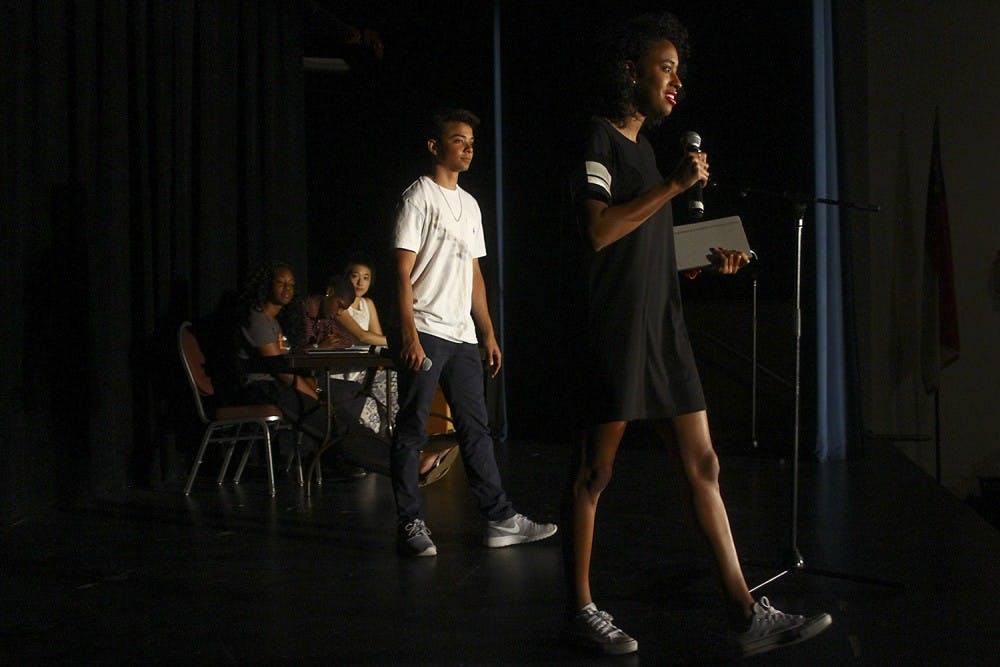Jazlin Laboy uses spoken-word poetry to tell her stories. “To a Friend Somewhere in Chicago” is about a friend she felt disconnected from after leaving the West Side of Chicago to go to college halfway across the country.
“But as we both tried to escape the limits of our four-corner block, I felt you trailing / Sinking into the same pavement that you once told me you hated / Scared of the unknown, scared of failing both here and there I took that chance for the both of us / And all I can think of is how I left you there,” are some of the verses from Laboy’s poem.
Laboy, a 2017 graduate, was a member of the Ebony Readers/Onyx Theatre, a 15-person spoken-word poetry group that’s based within UNC’s Black Student Movement.
Founded in the 1970s, EROT gives poets like Laboy a platform to talk about issues facing people of color.
“Performance is key when it comes to EROT,” Laboy said. “You can have the greatest words, but if you can’t relay your message in performance and emotion, it just falls flat.”
Wesley Simmons, a senior exercise and sports science major and member of EROT, said that art can bridge the communication gap between groups that don’t really understand each other.
“I feel like art that doesn’t have that purpose is almost wasting its potential at a certain point,”Simmons said. “Like, it’s cool to make songs about turning up. It’s cool to make frivolous things, but at the same time, there’s a bigger purpose and point — and a poignant point that you can use art for. I think it’s important for artists to have an agenda.”
Mistyre Bonds, a member of the UNC Wordsmiths, said that “artivism” — art that makes a point on social justice — is part of most of her poetry and rap, including her favorite original piece, “Hands Up.”



